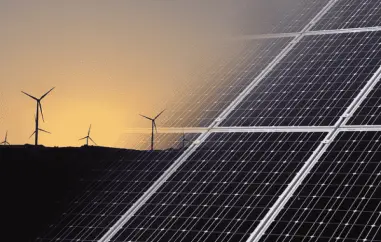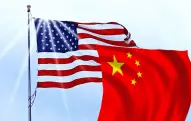The Impact of Trump's Trade Policies on Russian Markets
The recent trade policies initiated by U.S. President Donald Trump have notably excluded Russia and Belarus from the list of countries facing tariffs. This absence presents a potential short-term advantage for Russia, particularly in the energy sector, as it may enable Russia to fill the void left by U.S. energy supplies to China. However, this benefit is expected to be limited over time, especially given the looming threat of a global economic downturn that could diminish demand for Russian oil and gas.
Since taking office, President Trump has implemented various tariffs targeting major trading partners, including China, Mexico, Canada, and the European Union. The administration has argued that these measures are necessary to rectify perceived imbalances in global trade, where imports far exceed exports. Recently, Trump escalated these tensions by imposing a minimum 10% tariff on all U.S. trading partners, alongside reciprocal tariffs on numerous countries.
As the trade war intensifies, the exchange of tariffs between the U.S. and China has already begun to take shape. China has responded with its own tariffs, imposing a 15% levy on American goods such as chicken, wheat, and corn, while also applying a 10% tariff on products including soybeans, beef, and pork. Prior to this, China had already enacted a 15% border tax on U.S. coal and liquefied natural gas (LNG) as a retaliatory measure.
The cumulative effect of these tariffs has resulted in American tariffs on certain Chinese goods potentially reaching as high as 45-50%. Such tariffs effectively function as taxes on American businesses purchasing goods from China, prompting both nations to seek alternatives, either through domestic production or sourcing from third countries.
In the context of Russia's trade dynamics, the U.S.-China trade conflict may slightly enhance demand for certain Russian exports. Agricultural exporters in Russia could see a boost due to the rift between China and the U.S., with potential for increased Russian agricultural products entering the Chinese market. Furthermore, Russia is expected to amplify its energy exports to China, with possibilities for China to substitute U.S. LNG with higher volumes from Russia.
However, analysts caution that there are limits to how much Russia can expand its energy exports. Data from Chinese customs indicates that the U.S. accounted for less than 1% of China's LNG, coal, and oil imports in 2024. Although some reports suggest higher figures, they still represent a small fraction of China's overall energy needs. Moreover, China is diversifying its energy sources, looking to suppliers such as Myanmar and Kazakhstan.
Challenges also remain for Russian coal exports, as logistics and strong domestic production within China may hinder significant increases. The potential short-term benefits to Russia's oil and gas sectors must be weighed against the broader risks of a trade war, which could stifle global economic growth and subsequently reduce the demand for energy resources, adversely affecting Russia's revenue.
There is speculation that Trump's tariffs may inadvertently push major economies closer to Russia by increasing their willingness to disregard American sanctions on Russian trade. While some analysts suggest that trade conflicts may lead to a shift away from the U.S. dollar and financial systems, this process is likely to take considerable time, with the dollar expected to retain its dominance in the near term.
Despite the potential for trade wars to distract from ongoing geopolitical issues, experts assert that the U.S. retains the capacity to enforce its sanctions throughout various economic channels. The intricate mechanisms governing sanctions enforcement are largely independent of trade disputes, allowing the U.S. to maintain pressure on Russia while navigating its own trade challenges.










































